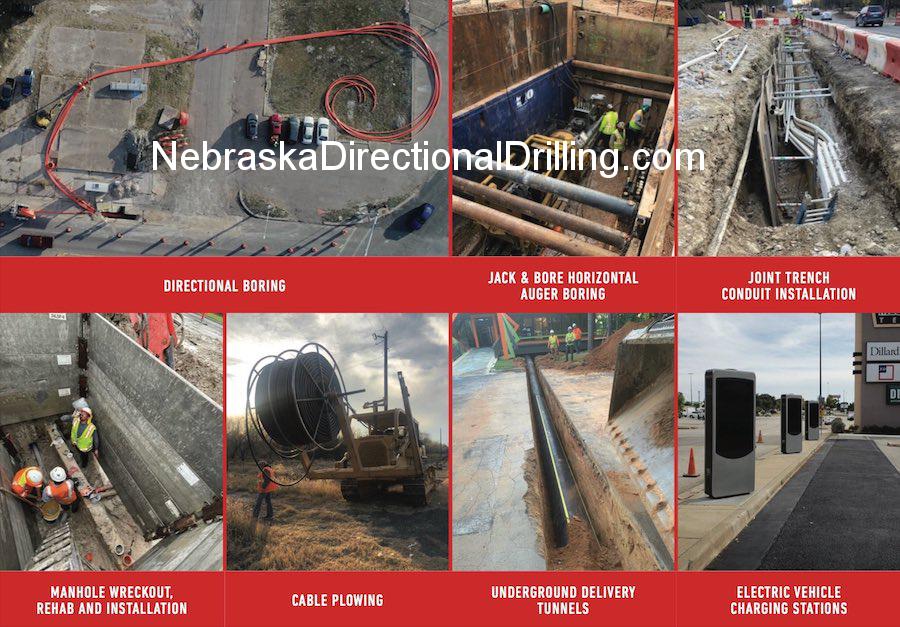Rock Boring
Rock drilling is quantified by a rock’s PSI. Rock density ranges from the highest hard rock PSIs (marble, granite, coral) to the lowest PSIs soft rock (cobble).
It’s important to gather as much information as possible about the soil conditions and any rock formations along the bore path before you start.
For softer rock formations (8,000 psi compressive strength and lower) milled tooth bits offer the fastest penetration rates at a lower cost.
Nebraska Directional Drilling Rock Bore | Rock Bores
Nebraska Directional Drilling Rock Bore | Rock Bores
Mixed faces - (soil conditions that present two or more different types of material in the path of the bore) which include rock - are often encountered over the path of a bore.
When rock is encountered, different drilling heads will need to be used from tri-cone bits to railheads depending on the type of rock encountered.
To drill in rock, a mud motor, which converts the hydraulic pressure of the drilling fluid into mechanical rotation, is used to rotate the drill bit and the drill pipe is not continuously rotated. Steerage is accomplished by aligning the angle of the mud motor to the desired direction.
Nebraska Directional Drilling Rock Bores | Auger Rock Boring
Nebraska Directional Drilling Rock Bores | Auger Rock Boring
Rock auger boring is similar to auger boring in that rock boring utilizes a standard auger boring machine and augers for spoil removal. The difference is in the cutterhead attachment. Standard auger boring cutter heads are not equipped to cut through rock greater than 3,000 psi. However our rock disc cutter heads and mixed ground cutter heads provide the capability to tackle the most challenging rock bores.
Nebraska Directional Drilling Rock Boring | Deep Rock Boring
Nebraska Directional Drilling Rock Boring | Deep Rock Boring
For rock formations that are harder than 8,000 psi, our tri-cone bit with tungsten carbide inserts (TCI) is often the go-to bit. In these extreme conditions, the type of bit insert is determined by the hardness (PSI) of the rock. The harder the rock the more conical or rounded the TCI inserts well use.


